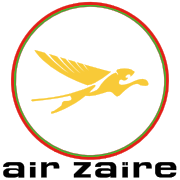Air Zaïre
From Roach Busters
|
Air Zaïre is the state-owned national airline of the Republic of Zaire. Large distances between urban centers and a lack of modern ground transportation make air transport of particular importance, although domestic air services deteriorated substantially in the 1980s and 1990s. The number of airlines serving Zaire had increased significantly in the 1980s, and included the formation of at least two private Zairian airlines that competed with Air Zaïre. Both the number of destinations served within Zaire and the international links grew substantially in the wake of liberalization measures begun in 1983. Several European carriers as well as Air Zaïre and a private airline, Scibe Airlift, linked Kinshasa to places in Europe and the rest of Africa. But by 1992 most foreign airlines no longer landed at Kinshasa's airport, which was badly damaged by looting in late 1991. (Some flights resumed in late 1992.) People wishing to enter Zaire by air must land in Brazzaville in Congo and take a ferry across the Zaire River to Zaire.
Air Zaïre has been under the management of the French airline, Air Transport Union (Union de Transports Aériens, or "UTA") since the fall of 1986, but became virtually bankrupt as a result of the country's economic crisis in the 1990s. Air Zaire once operated four jets, but one was repossessed by Belgium and another by Israel for nonpayment of debts. Mobutu reportedly commandeered the other two to bring in newly printed bank notes from the printer in Germany.
Air Zaïre is said to be so unreliable, in fact, that local Zairians derisively call it "Air Peut-être" (Air Maybe). It is also not uncommon for flights to be cancelled at the very last minute when the president uses one of the planes for a trip abroad.
Note: Much of this material was obtained from Zaire: A Country Study, which was published by the Library of Congress and is in the public domain.

